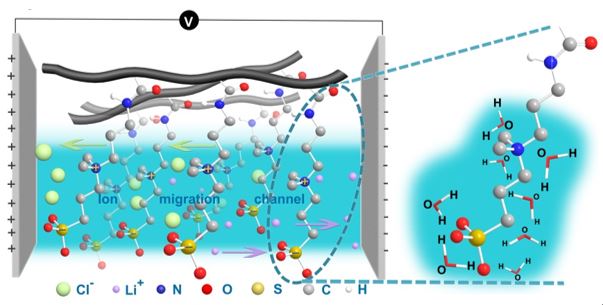Important progress has been made in the research of "gel electrolyte for all-solid-state supercapacitors"
BACKRecently, the research group of Professor Wu Changzheng, Professor Xie Yi's team from the University of Science and Technology of China, in collaboration with the research group of Associate Professor Liu Guangming from the Department of Chemical Physics, used a new type of amphiphilic gel electrolyte with unique ion channels in all-solid-state supercapacitors, achieving the best performance of graphene-based all-solid-state supercapacitors to date. This amphiphilic gel electrolyte is expected to become a new type of efficient electrolyte in the field of all-solid-state supercapacitors. This achievement was published online on May 26 in Nature Communications, 7:11782(2016).
In the face of growing energy demand, all-solid-state supercapacitors have received widespread attention as a new type of energy storage device, and gel electrolytes are key technical materials. In order to meet the needs of fast charging and discharging and high stability of all-solid-state supercapacitors, the development of new gel electrolytes with many advantages such as high ionic conductivity, excellent mechanical strength and water retention is an important scientific issue in this field. The core and key lies in how to construct ordered ion channels in gel electrolytes and understand their inherent electrochemical mechanisms.
Faced with this challenge, the research group of Professor Wu Changzheng from the School of Chemistry and Materials Science used the ordered amphiphilic groups of the amphiphilic gel electrolyte PPDP (poly([3-(methacrylamido)propyl]dimethyl(3-thiopropyl)ammonium hydroxide inner salt) to form unique ion channels for application in high-efficiency all-solid-state supercapacitors. Synchrotron radiation soft X-ray near-edge absorption spectroscopy confirmed that the amphiphilic groups of the amphiphilic gel electrolyte were ordered under an external electric field and could form unique ion channels to facilitate the transport of salt ions in the gel electrolyte. At the same time, each amphiphilic group can combine with 8 water molecules to form a hydration layer, giving the electrolyte PPDP good water retention properties. The constructed graphene-based all-solid-state supercapacitor achieved a specific capacity of 300.8 F cm-3 at a current density of 0.8 A cm-3, and after the current density increased by 25 times, there was only a 14.9% specific capacity loss, reaching the current optimal value of graphene-based all-solid-state supercapacitors. The construction of ordered ion channels provides a new idea for designing new high-efficiency energy storage devices.
